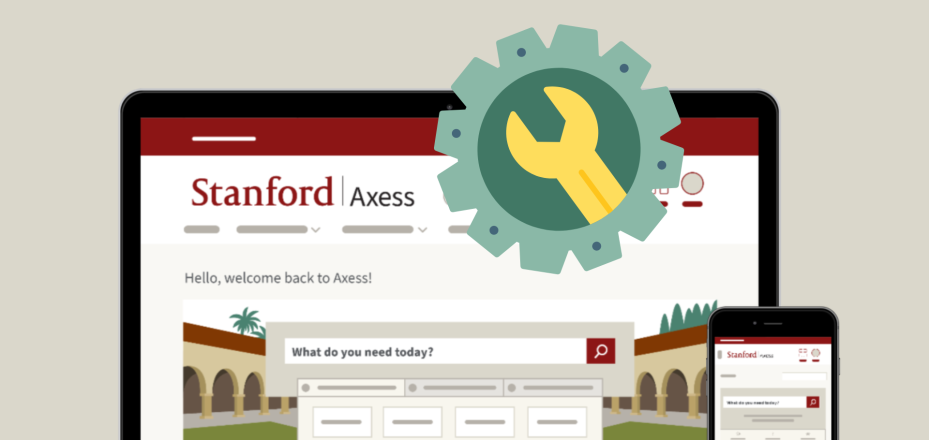UIT Supports ORA’s Transition to Mobile Workforce
As society shifts to an increasingly mobile culture, the impact it has on the workforce comes as no surprise. Thanks to advances in mobile technology and resources, employees have the ability to be just as productive in alternative work locations as they can be in the office.
Here at Stanford, teams are working hard to stay at the cutting edge of this “work from anywhere” approach. For the Office of Research Administration (ORA), it’s been part of their vision for awhile now, and with University IT’s (UIT’s) help, they are finding success in this endeavor.

“For years, many of our staff have worked from home one or two days a week,” said Russell Brewer, associate vice president of ORA. “We see the benefits that flexibility in work location provides to work/life balance, as well as how Stanford is increasingly supporting staff in non-campus locations. We want to stay ahead of the curve.”
Investing in the right technology to overcome challenges
Of course, a successful mobile workforce isn’t created overnight, and there are obstacles and challenges that must be addressed. For Brewer and his staff, one particular challenge they faced over the last few years was inconsistencies in functional equipment and tools.
“When working at an alternate work location, our staff had been using their own personal laptops and legacy systems, which resulted in inefficiencies due to the mix of tools and hardware,” Brewer explained.
So he enlisted UIT. Colleagues from across several UIT workgroups — particularly the End User Technology (EUT) team, Computer Resource Consulting (CRC) team, and Service Design team — joined forces to work with ORA to provide strategic technology leadership and guidance, and ultimately standardize ORA’s future equipment and support model.
“We understood ORA’s traditional work needs because we were already supporting their in-office virtual desktop environment,” said Ikenna Anyaso, manager of EUT. “Our new challenge was to figure out how to standardize and enhance their capability regardless of work location. The solution needed to be a forward-thinking approach that would support their local and mobile workforce now and into the future.”
UIT worked with ORA staff to field test several laptop models before eventually settling on the latest Dell 7480 model. They also evaluated and recommended other equipment such as noise-cancelling headsets with microphones to address common issues when working in open office areas, a home office, or even at Starbucks.
More than just equipment
Having the right equipment was just one piece of the puzzle for Brewer. Being able to perform work easily, regardless of location or equipment, was key too. UIT helped ORA settle on a consistent set of software tools.
“UIT supports a variety of applications, including Zoom, Jabber, Google Drive, and Box, that let colleagues communicate easily and simplifies access to their work documents,” said Nate Wagenaar, a CRC manager working on the effort. “Having tools that let you access your work and collaborate with your colleagues seamlessly and from anywhere is vital to any successful transition to a more mobile workforce.”
With input from Brewer’s staff, UIT recommended a handful of tools that met ORA’s needs. From there, UIT customized the operating system and applications to remove unnecessary software and ensure consistent tools could be accessed with ease.
Today, UIT is halfway through rolling out the laptops loaded with collaborative tools to everyone in ORA’s workforce, including workers out of state.
Strategies for success
The final piece of the puzzle was ensuring ORA staff agree on and understood processes, standards, and best practices when working away from campus. UIT designed and delivered a series of workshops to explore these topics. They also used the workshops to introduce the new mobile devices and collaboration tools so that everyone is comfortable — and effective — working within the new paradigm.
Ongoing support
Now and into the future, UIT will continue providing consistent technical support to ensure all ORA staff — regardless of work location — will have what they need to be successful and productive.
Brewer’s ongoing vision for ORA includes completely giving up paper and shared drives in favor of cloud-based collaboration tools such as Box. In fact, Brewer himself says that he goes into meetings to present with only a cell phone for equipment. He uses Box and Google Drive to present with material stored in the cloud.
“We are baking mobile technology and ideals into our culture,” said Brewer. “The key to success is to introduce mobile technology as an office, not individually. It also helps to have a partner like University IT.”
DISCLAIMER: UIT News is accurate on the publication date. We do not update information in past news items. We do make every effort to keep our service information pages up-to-date. Please search our service pages at uit.stanford.edu/search.



